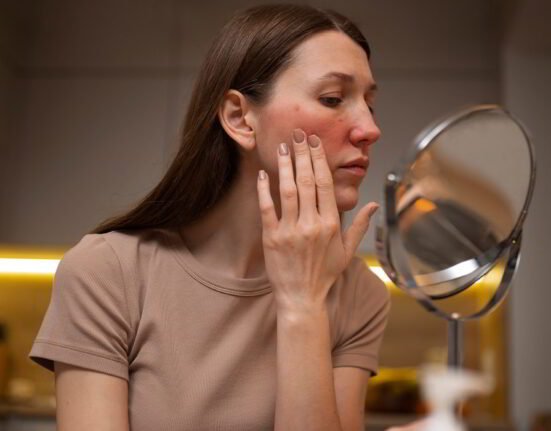People seek therapies for various reasons. These include current circumstances, long-standing problems, and chronic problems, to search for personal growth and happiness, and also to get an insight in their life. Psychological treatment aims at reducing abnormal behavior by psychological means. There are various types of therapies behavior therapy, psychodynamic therapy approaches, humanistic approaches to therapy, biological approaches to therapy, and sociocultural approaches to therapy. These are being discussed below:
Behavior Therapy
Behavior therapy is a term that describes a wide range of techniques used to change maladaptive behavior. The goal of behavior therapy is to reinforce that behavior that is desirable and not the one which is undesirable. Behavior therapy is derived from the behaviorism school of psychology.
People most often seek behavioral therapy to treat depression, anxiety, panic disorders, disorders involving excessive anger such as intermittent explosive disorder, eating disorders, post-traumatic stress disorder, bipolar disorder, attention deficit hyperactivity disorder (ADHD), phobias, including social phobias, obsessive-compulsive disorder, etc.
Types of Behavior Therapy
1) Cognitive Behavior Therapy
Cognitive behavioral therapy is very popular. It combines behavioral therapy, which focuses on behavior patterns, with cognitive therapy, which focuses on thought patterns.
Treatment focuses on how your thoughts and beliefs influence your actions and moods. It tries to focus on the current problems of a person and looks for ways to resolve them. The long-term goal is to build patterns of thought and behavior that will help you achieve a better quality of life.
2) Cognitive Behavioral Play Therapy
Cognitive-behavioral play therapy combines cognitive and behavioral theories within a play therapy model. It is a sensitive therapeutic approach that uses both cognitive and behavioral therapy. Using play, therapy is conducted in a non-threatening and indirect style. It is brief, time-limited, structured, directive, problem-based, and educational. In cognitive-behavioral play therapy, the therapist enters the world of play and gains the child’s acceptance. Once this happens, the therapist begins to gently guide the game. Toys are being used as models.CBPT uses materials and environments such as sand, puppets, live animals, action figures, dolls, and games, as well as nature walks and baking. This type of therapy can be delivered both individually as well as in groups.
3) Acceptance and Commitment Therapy
Acceptance and Commitment Therapy (ACT) is a type of psychotherapy that uses acceptance as an effective tool to deal with negative thoughts, feelings, symptoms, or circumstances. It also encourages greater commitment to healthy, constructive activities that support your values or goals.
ACT therapists operate on the basis of a theory that suggests that increasing acceptance can lead to increased psychological flexibility.1 This approach has a number of benefits and can help people stop habitually avoiding certain thoughts or emotional experiences, which can lead to other problems.
4) Dialectical Behavior Therapy
Dialectical Behavior Therapy (DBT) can also be stated as a modified version of Cognitive Behavioral Therapy (CBT). His main goal is to teach people how to live in the present moment, develop healthy ways to cope with stress, regulate their emotions, and improve relationships with others.
DBT was originally intended to treat borderline personality disorder (BPD) but has been adapted to treat other mental health conditions. It can help people who have difficulty with emotional regulation or exhibit self-destructive behaviors (such as eating disorders and substance use disorders). This therapy is also efficient for the treatment of PTSD.
Humanistic Therapy
Humanistic therapy is an approach to mental health that emphasizes the importance of being your true self in order to lead the most fulfilling life possible. It works on the principle that each individual has a subjective approach to understanding the world. This view can influence your choices and actions. Humanistic therapy also includes the fundamental belief that people are good at heart and capable of making good decisions for themselves. If one doesn’t value themselves it becomes harder to reach their optimum potential.
Humanistic therapy can be used to treat people with depression, anxiety, panic disorders, personality disorders, schizophrenia, addictions, and concerns about interpersonal and family relationships. This approach can also benefit people who have low self-esteem, who struggle to find a purpose or reach their potential, who lack feelings of “wholeness”, who are searching for personal meaning, or who are not happy with themselves as they are.
Types of Humanistic Therapies
1) Client-Centered Therapy
Client-centered therapy is a nondirectional talk therapy technique. Client-centered therapy can improve self-concept, which is your organized set of beliefs and ideas about yourself. Self-concept plays an important role not only in how people see themselves but also in how they view and interact with the world around them.
2) Motivational Interviewing
Motivational interviewing is a brief form of therapy and can be delivered in either one or two sessions. The main of it is to make the patients change their way of thinking and make them commit to the treatment plan. This type of therapy differs from client-centered counseling because it employs a more direct approach that explores the client’s own reasons for wanting to change.
3) Gestalt Therapy
Gestalt therapy is a form of psychotherapy that is aimed at increasing a person’s awareness, freedom, and self-control. It is a form of therapy that focuses on the present moment rather than past experiences. The aim of each individual is to achieve one’s personal growth and balance. Gestalt therapy uses empathy and unconditional acceptance for the treatment of a patient. This helps individuals get rid of anxiety by learning how to trust and accept what they feel. Psychodynamic Therapy
Psychodynamic Therapy
Psychodynamic therapy is a form of talk therapy. It is based on the idea that talking to an expert about the problems people are facing can help them find relief and find solutions.
Through working with a psychodynamic therapist, people are able to better understand the thoughts, feelings, and conflicts that contribute to their behavior. This approach to therapy also helps people better understand some of the unconscious motivations that sometimes influence how people think, feel and act.
Couple Therapy
Couples therapy is counseling for couples who are in a relationship, whether married or not. This is often called marriage counseling. The goal is to improve couples’ relationships, or sometimes to help them decide whether or not to stay together. Although the focus is on the couple, there are times when individual psychological issues of one or both parties need to be addressed. This therapy helps in improving communication skills, better problem solving in between, helps in identifying life goals, etc. Other common problems include infidelity, anger, financial problems, illness, or other life changes. Depending on the level of anxiety in the relationship, therapy can be short-term or over a period of months or even years
Family Therapy
Family therapy is a type of psychological counseling that helps the members of a family to improve communication between and resolve their conflicts. Family therapy is often short-term. It can include all family members or just those who can or want to attend. The type of prescribed treatment plan is fully subjective to one’s family. Family therapy sessions can teach you skills to deepen family bonds and overcome stressful times, even after you’ve finished therapy.
Antipsychotic Drugs
Antipsychotic drugs are mainly used to treat disorders that have psychotic symptoms in them such as schizophrenia. Antipsychotic drugs reduce the intensity of delusions and hallucinations. And this is done by blocking the dopamine receptors. However, apart from the benefits, these drugs hold they also pose a great risk to patients with dementia because they are associated with an increased risk of death. Antipsychotic drugs are usually administered daily in pill form while some patients are required not to take the drugs on a daily basis.
Antidepressants Drugs
These are the most commonly prescribed psychiatric medications. These drugs are used to treat depressive symptoms and some types of anxiety disorders. These drugs can have a variety of side effects like dizziness, sexual dysfunction, weight gain, dry mouth, etc. There are various types of antidepressants which include selective serotonin reuptake inhibitors, monoamine oxidase inhibitors, tricyclic antidepressants, etc.
Antianxiety Drugs
Antianxiety drugs are used for conditions in which tension and anxiety are significant conditions. These drugs do not provide a cure however these medications can keep symptoms under control until patients are able to receive other forms of effective psychological treatments. Benzodiazepines are one of the most widely used classes of antianxiety. Another class of antianxiety drugs that is used is buspirone.
Lithium drugs
In the year 1970 lithium treatment was introduced in the USA. In the treatment of the bipolar disorder, lithium plays an important role. Lithium sometimes relieves depression mainly in patients with bipolar depression. There are various side effects of lithium the person’s thirst is increased, problems related to the gastrointestinal region of the body, sudden weight gain, tremors, and fatigue. Also, lithium can be toxic if it exceeds the recommended dose. If not treated appropriately it can cause neuronal damage or even death.
Electroconvulsive Therapy
Electroconvulsive therapy (ECT) is a procedure performed under general anesthesia in which small electrical currents are passed through the brain to deliberately induce a brief seizure. ECT appears to cause changes in brain chemistry that can quickly reverse the symptoms of certain mental health conditions. ECT often works when other treatments have failed and when a full course of treatment has been completed, but it may not work for everyone. ECT is much safer today. Although ECT can still cause some side effects, it now uses electrical currents delivered in a controlled environment to achieve the greatest benefit with the least risks.
Transcranial magnetic stimulation
Transcranial magnetic stimulation (TMS) is a therapy based on brain stimulation. It is a non-invasive treatment that uses electromagnetic pulses to stimulate nerve cells, which can improve symptoms of neurological or mental disorders. TMS is mainly used to treat depression. It successfully helps people who do not respond to antidepressants and psychotherapy. There is also some evidence that TMS can help other disorders such as anxiety and Parkinson’s disease. Because TMS uses repetitive electrical impulses, it is sometimes called repetitive transcranial magnetic stimulation (rTMS).
Conclusion
In conclusion, we can state that no form of therapy or treatment is the ultimate and complete solution responsible for the overall well-being of an individual but it is the well-planned treatment plan which consists of various procedures and which are prescribed by a trained professional. And for each disorder, the treatment plan will also differ accordingly.












Leave feedback about this